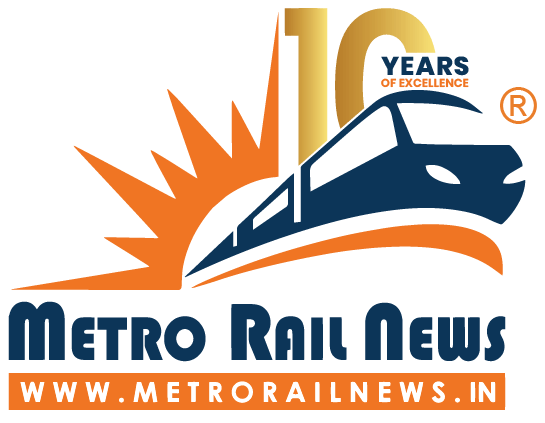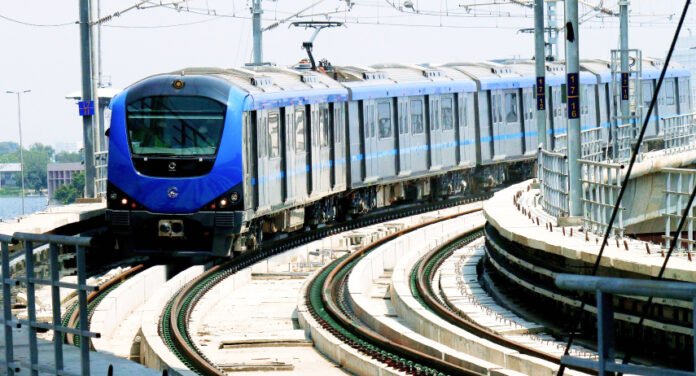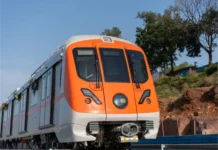Introduction
Chennai, formerly known as Madras until 1996, is the capital and largest city of Tamil Nadu, the southernmost state of India. Chennai is recognised as the cultural capital of South India. The city is renowned for its rich cultural heritage, including Bharatanatyam, Carnatic music, ancient temples, and vibrant festivals such as the annual Madras Music Season. With a population of approximately 7 million, Chennai ranks as the fourth-largest city in India.
The city is situated on the Coromandel Coast of the Bay of Bengal. Chennai is one of India’s largest metropolitan areas and serves as a major cultural, industrial, and economic hub. Chennai is often called the “Detroit of India” for housing a major portion of the country’s automobile industry. Chennai is also recognised as the nation’s “health capital” due to its prominence in medical tourism.
Why is a Metro System Essential for Chennai’s Growth?
Chennai has witnessed rapid growth and urban expansion over the past few decades. This surge in urbanisation has brought with it several challenges that have placed immense pressure on the city’s existing transport infrastructure. Some of the key issues faced by the city are highlighted below:

Chennai’s Total Population By Year
Rapid Urbanisation: Chennai has witnessed a steady and sharp rise in its population, increasing from under 1 million in 1950 to more than 11 million by 2025. This rapid urbanisation increased the pressure on the city’s urban infrastructure, especially its transportation network. The establishment of the metro system emerged as the most viable option to tackle Chennai’s rising transport challenges.
Traffic Congestion: Chennai has experienced severe traffic congestion due to its increasing population, which has led to a rise in the number of private vehicles. The graph illustrates the worsening traffic congestion in Chennai, with commute times and congestion levels steadily rising since 2017. This situation underscored the critical necessity for sustainable transportation solutions, such as the implementation of a metro system in Chennai.
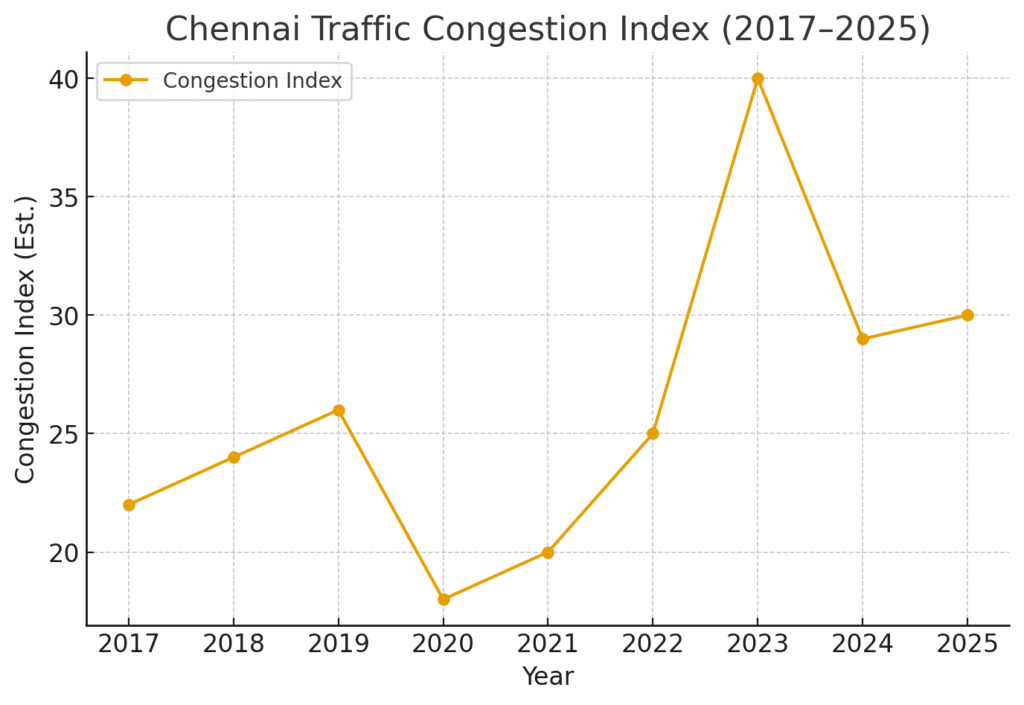
Chennai Metro: A Step Towards Smarter Urban Transit
Overview
Chennai Metro is an urban Mass Rapid Transit System (MRTS) developed to serve Chennai, the capital of Tamil Nadu. The project is being executed by Chennai Metro Rail Limited (CMRL). Phase I of the network is already operational, while Phase II is currently under construction. The Government of India approved the Chennai Metro Rail project on 15th June, 2016.
To implement this ambitious project, the Government of Tamil Nadu established a Special Purpose Vehicle (SPV) named Chennai Metro Rail Limited on December 3, 2007, under the Companies Act. The entity has since evolved into a Joint Venture between the Government of India and the Government of Tamil Nadu, with both holding equal equity.
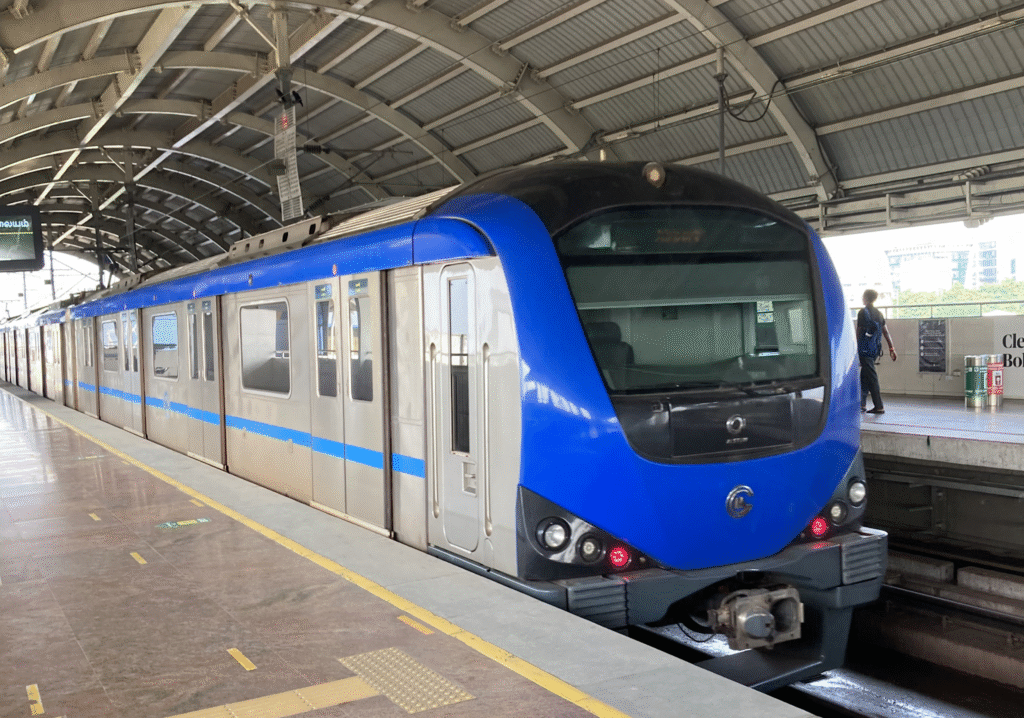
| Phase 1 | |||
| Line | Route | Length | Total No. of Stations |
| Line 1 (Blue Line) | Chennai Airport – Washermanpet | 23.10 km | 17 Stations |
| Line 2 (Green Line) | Chennai Central – St. Thomas Mount | 22 km | 17 Stations |
| Phase 1 Extension | |||
| Line 1 (Blue Line) | Washermanpet – Wimco Nagar | 9.051 km | 9 Stations |
| Phase 2 | |||
| Line 3 ( Purple Line) | Madhavaram – SIPCOT 2 | 45.4 km | 49 Stations |
| Line 4 (Orange Line) | Light House – Poonamallee Bus Depot | 26.09 km | 28 Stations |
| Line 5 (Red Line) | Madhavaram – Sholinganallur | 44.6 km | 48 Stations |
Key Specification
| Authorized Authority | Chennai Metro Rail Limited (CMRL) |
| Speed and Track | Top Speed: 80 kmph |
| Average Speed: 33 kmph | |
| Track Gauge: Standard Gauge – 1435 mm | |
| Electrification | 25 kV, 50 Hz AC overhead catenary (OHE) |
| Signalling | Communications-Based Train Control (CBTC) |
Phase 1 of Chennai Metro
Overview
Phase I of the Chennai Metro Rail project encompasses a total network length of 45.046 km and comprises two operational metro corridors. Approximately 55% of the corridors within Phase I are constructed underground, while the remaining segments are elevated. Construction for Chennai Metro Phase I commenced in April 2009.
Route Details
Line-1 (Blue Line): Chennai Airport – Washermanpet (23.10 km)
- Status: Operational
- Type: Elevated & Underground
- Depot: Koyambedu (shared with Green Line)
- Number of Stations: 17
- Station Names: Chennai International Airport, Meenambakkam, Nanganallur Road (OTA), Alandur, Guindy, Little Mount, Saidapet, Nandanam, Teynampet, AG-DMS, Thousand Lights, LIC, Government Estate, Chennai Central, High Court, Mannadi, Washermanpet
Timeline of Blue Line
| Operational Date | Section | Length |
| 21 Sept 2016 | Airport – Little Mount | 8.6 km |
| 25 May 2017 | Little Mount – AG-DMS | 4.8 km |
| 10 Feb 2019 | AG-DMS – Washermenpet | 9.8 km |
Line-2 (Green Line): Chennai Central – St. Thomas Mount (22 km)
- Status: Operational
- Type: Elevated & Underground
- Depot: Koyambedu (shared with Blue Line)
- Number of Stations: 17
- Station Names: St. Thomas Mount, Alandur, Ekkattuthangal, Ashok Nagar, Vadapalani, Arumbakkam, CMBT, Koyambedu, Thirumangalam, Anna Nagar Tower, Anna Nagar East, Shenoy Nagar, Pachaiyappa’s College, Kilpauk Medical College, Nehru Park, Egmore, Chennai Central
Timeline of Green Line
| Operational Date | Section | Length |
| 29 Jun 2015 | Koyambedu – Alandur | 10 km |
| 15 Oct 2016 | Alandur – St. Thomas Mount | 1.3 km |
| 14 May 2017 | Koyambedu – Nehru Park | 8 km |
| 25 May 2018 | Nehru Park – Central | 2.6 km |
Phase 1 Extension
Overview
Chennai Metro’s Phase 1 Extension project consists of a 9.051 km extension of the already operational Blue Line. The Phase 1 extension project was approved by Tamil Nadu’s state cabinet in December 2015 and by India’s Central Government in June 2016 with an estimated cost of Rs. 3770 crore.
Route Details
Line-1 (Blue Line): Washermanpet – Wimco Nagar
- Length: 9.051 km
- Status: Operational
- Type: Underground (2.379 km) & Elevated (6.672 km)
- Depot: Wimco Nagar (for trains on the entire Blue Line)
- Number of Stations: 9
- Station Names: Sir Thiyagaraya College (underground), Tondiarpet (underground), New Washermenpet (formerly Tondiarpet), Tollgate Metro, Kaladipet Metro (formerly Thangal), Thiruvottriyur Theradi (formerly Gowri Ashram), Thiruvottriyur Metro, Wimco Nagar Metro, Wimco Nagar Depot Station

Chennai Metro Phase 2
Overview
Phase 2 of the Chennai Metro, covering a total length of 118.9 km, consists of three new metro corridors. The project’s Detailed Project Report (DPR) was prepared by RITES and finalised in December 2018. In October 2024, the Union Cabinet approved the project with a total estimated cost of Rs. 63,246 crore.
| Line | Route | Elevated Length | Underground Length | Total Length |
| Line 3 ( Purple Line) | Madhavaram – SIPCOT 2 | 19.1 km | 26.7 km | 45.8 km |
| Line 4 (Orange Line) | Light House – Poonamallee Bus Depot | 16 km | 10.1 km | 26.1 km |
| Line 5 (Red Line) | Madhavaram – Sholinganallur | 41.2 km | 5.8 km | 47 km |
Phase 2 Route Details
Line-3 (Purple Line): Madhavaram – SIPCOT 2
- Length: 45.4 km (19 km elevated & 26.4 km underground)
- Depot: Madhavaram & SIPCOT
- Number of Stations: 49 (20 elevated & 29 underground)
- Station Names: Madhavaram Milk Colony, Thapalpetti, Murari Hospital, Moolakadai, Sembiyam, Permabur Market, Perambur Metro, Ayanavaram Otteri, Pattalam, Perambur Barracks Road, Doveton Junction (canceled), Purasawalkam High Road, Kellys, KMC, Chetpet Metro, Sterling Road Junction, Nungambakkam, Gemini, Thousand Lights, Royapettah Govt Hospital, Radhakrishnan Salai Jn, Thirumayilai Metro (interchange with Line-4), Mandaiveli, Greenways Road Metro, Adyar Jn, Adyar Depot, Indira Nagar, Thiruvanmiyur Metro, Taramani Road Junction, Nehru Nagar, Kandanchavadi, Perungudi, Thoraipakkam, Mettukuppam, PTC Colony, Okkiyampet, Karapakkam, Okkiyam Thoraipakkam, Sholinganallur (interchange with Line-5), Sholinganallur Lake, Ponniamman Temple, Sathyabama University, St Joseph College, Semmancheri, Gandhi Nagar, Navallur, Siruseri, SIPCOT 1 and SIPCOT 2.
| Recent Development on Line 3 1. TBM Breakthrough In May 2025, Tata Projects Ltd’s TBM Kalvarayan achieved a breakthrough at Perambur station of Line 3. The TBM Kalvarayan started its tunnel drive from Ayanavaram Station to Perambur Station and constructed a 867 m up-line tunnel, achieving a breakthrough at Perambur South Shaft. In 2021, Tata Projects Limited bagged Contract TU-01 from Chennai Metro Rail Limited ( CMRL) with a 42-month deadline. |
Line-4 (Orange Line): Light House – Poonamallee Bus Depot
- Length: 26.09 km (16.02 km elevated & 10.07 km underground)
- Depot: Poonamallee
- Number of Stations: 28 (18 elevated & 10 underground)
- Station Names: Light House, Kutchery Road, Thirumayilai Metro, Alwarpet, Bharathidasan Road, Adyar Gate Junction, Nandanam, Panagal Park, Kodambakkam Sub Urban, Kodambakkam Power House, Vadapalani, Saligramam, Avichi School, Alwarthirunagar, Valasaravakkam, Karambakkam, Alapakkam, Porur Junction, Chennai Bypass Crossing, Ramachandra Hospital, Iyyapanthangal Bus Depot, Kattupakkam, Kumananchavadi, Karayanchavadi, Mullai Thottam, Poonamalle Bus Terminus, Poonamallee Bypass, Poonamallee Bus Depot
| Progress Update on Line 4 1. TBM Breakthrough In July 2025, ITD Cementation’s TBM Peacock achieved a Breakthrough at Line 4’s Kodambakkam Ramp Retrieval shaft near Meenakshi College. This development was recorded under Package C4-UG02. In January 2022, ITD Cementation bagged Package C4-UG02 of Chennai Metro Phase 2 from Chennai Metro Rail Corporation (CMRL) at Rs 1846.86 crore. 2. Trial Runs In June 2025, CMRL initiated testing and trial runs on Line 4. The trials were conducted for the 10 km Downline stretch of Line 4, which connects Porur Junction Metro Station to Poonamalle Bypass Metro Station through 10 stations. |
Line-5 (Red Line): Madhavaram – Sholinganallur
- Length: 44.6 km (38.77 km elevated & 5.83 km underground)
- Depot: Madhavaram
- Number of Stations: 48 (41 elevated, 1 at-grade & 6 underground)
- Station Names: Madhavaram Milk Colony (interchange with Line-3), Venugopal Nagar, Assissi Nagar, Manjambakkam, Velmurugan Nagar, MMBT, Shastri Nagar, Reteeri Junction, Kolathur Junction, Srinivasa Nagar, Villivakkam Metro, Villivakka, Bus Terminus, Nadhamuni, Anna Nagar Depot, Thirumangalam, Kendriya Vidyalaya, Grain Market, Sai Nagar Bus Stop, Elango Nagar Bus Stop, Alwartiru Nagar, Valasaravakkam, Karabakkam, Alapakkam, Porur Junction, Mugalivakkam, DLF IT SEZ, Sathya Nagar, CTC, Butt Road, Alandur (interchange with Line-1 and Line-2), St Thomas Mount (interchange with Line-2), Adambakkam, Vanuvampet, Puzhuthivakkam, Madipakkam, Kilkattalai, Echangadu, Kovilabakkam, Vellakkal, Medavakkam Koot Road, Kamraj Garden Street, Medavakkam Junction, Perumbakkam, Global Hospital, Elcot, Sholinganallur
| Latest Updates on Line 5 TBM Breakthrough In August 2025, TBM Kurinji achieved a breakthrough at the North Shaft of Kolathur Station under Package C5-UG06. For its first assignment, TBM Kurinji started its tunnel drive on 20 February 2025, from Kolathur Ramp towards Kolathur Station, covering a bored tunnel length of 246 m. In 2023, Tata Projects secured the Package C5-UG06 from CMRL at an estimated cost of Rs. 1817.54 Cr. |
Rolling Stock for Chennai Metro Phase 2
Alstom Transport will be supplying 32 driverless 3-car (UTO) trains consisting of 96 cars for Phase 2 of Chennai Metro. In June 2025, Alstom Transport India & CMRL signed a Contract Agreement for the rolling stock Contract ARE04A of Chennai Metro Phase 2.
| Update: Recently, Research Designs and Standards Organisation (RDSO) completed safety certification trials of the Rolling Stock of Phase 2. The trials were conducted between the Poonamallee Bypass Metro Station and Porur Junction Metro Station. |
Latest Update on Chennai Metro Phase 2
- In July 2025, Delhi Metro Rail Corporation (DMRC) and CMRL formalised an agreement for the Operation and Maintenance services for Chennai Metro Phase 2’s three corridors. The agreement also includes the Maintenance Depots located at Madhavaram, Poonamallee, and Semmancheri. Under the terms of this agreement, DMRC will provide operation and maintenance services for a duration of approximately 15 years
Expansion of Chennai Metro Network
- Extension of Corridor 4 – Lighthouse to High Court
To increase metro connectivity, the Chennai Metro Rail Limited (CMRL) is planning to extend Corridor 4 (Orange Line) of Chennai Metro Phase 2, which is currently under construction. This proposed extension, spanning approximately 7 km, aims to improve metro connectivity from Lighthouse to the High Court.
- New Corridor: Tambaram–Guindy–Velachery
The CMRL is planning a new metro corridor that will span 21 km, connecting Tambaram, Guindy, and Velachery. This corridor aims to integrate the suburbs of Tambaram, Medavakkam, Pallikaranai, and Velachery with the Guindy Metro station, part of Corridor 1 of the CMRL.
| Update: In August 2025, Systra MVA Consulting bagged the consultancy contracts for the preparation of Detailed Project Reports (DPRs) for both projects. |
Ridership Trend in Chennai Metro
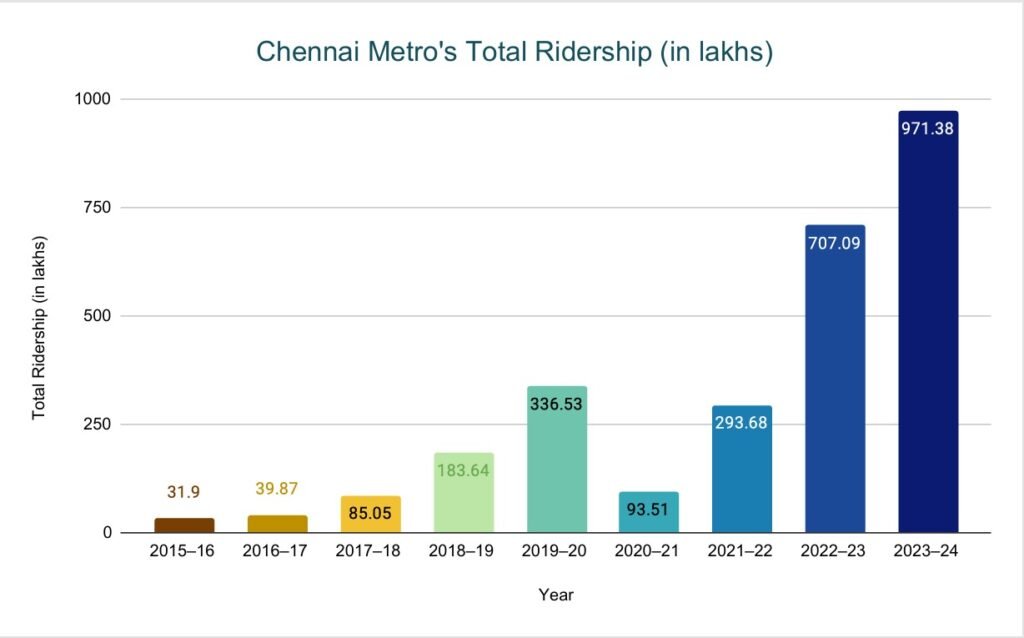
The ridership level of Chennai has increased over the years. For the first time since the start of Chennai Metro Rail services, the trains recorded the transportation of 1.03 crore passengers in July 2025. This figure represents an increase of 1.15 million passengers compared to June, reflecting a 12.5% rise in ridership. A decade after the commencement of Metro Rail operations, the network recorded an average of 330,000 passengers per day in July 2025, showcasing a remarkable surge compared to preceding months. The highest ridership for the month occurred on July 4, with 374,948 passengers utilizing the service. Additionally, the average daily passenger traffic increased from 287,000 in May to 307,000 in June 2025.
Conclusion
The Chennai Metro Project is a large-scale and capital-intensive development that will not only improve connectivity but also support the overall growth of the city. With the addition of 118.9 km routes under Phase 2, the total network will expand to 172.95 km. Since its launch six years ago, the project has seen changes in both cost and scope, with the final budget fixed at ₹63,846 crore. Ridership on the operational corridors has shown steady growth, which is a positive sign for the long-term sustainability of the system. At the same time, depending only on farebox revenue will not ensure financial stability. The authorities need to put in place clear strategies to make better use of the infrastructure for generating non-fare revenue. Further, the success of Phase 2 will also depend on the availability of reliable last-mile connectivity from the stations, which will play a key role in attracting more passengers. The timely execution of Phase 2, along with effective integration of last-mile connectivity and revenue diversification, will determine how well the Chennai Metro serves the city’s transport needs in the coming years.
